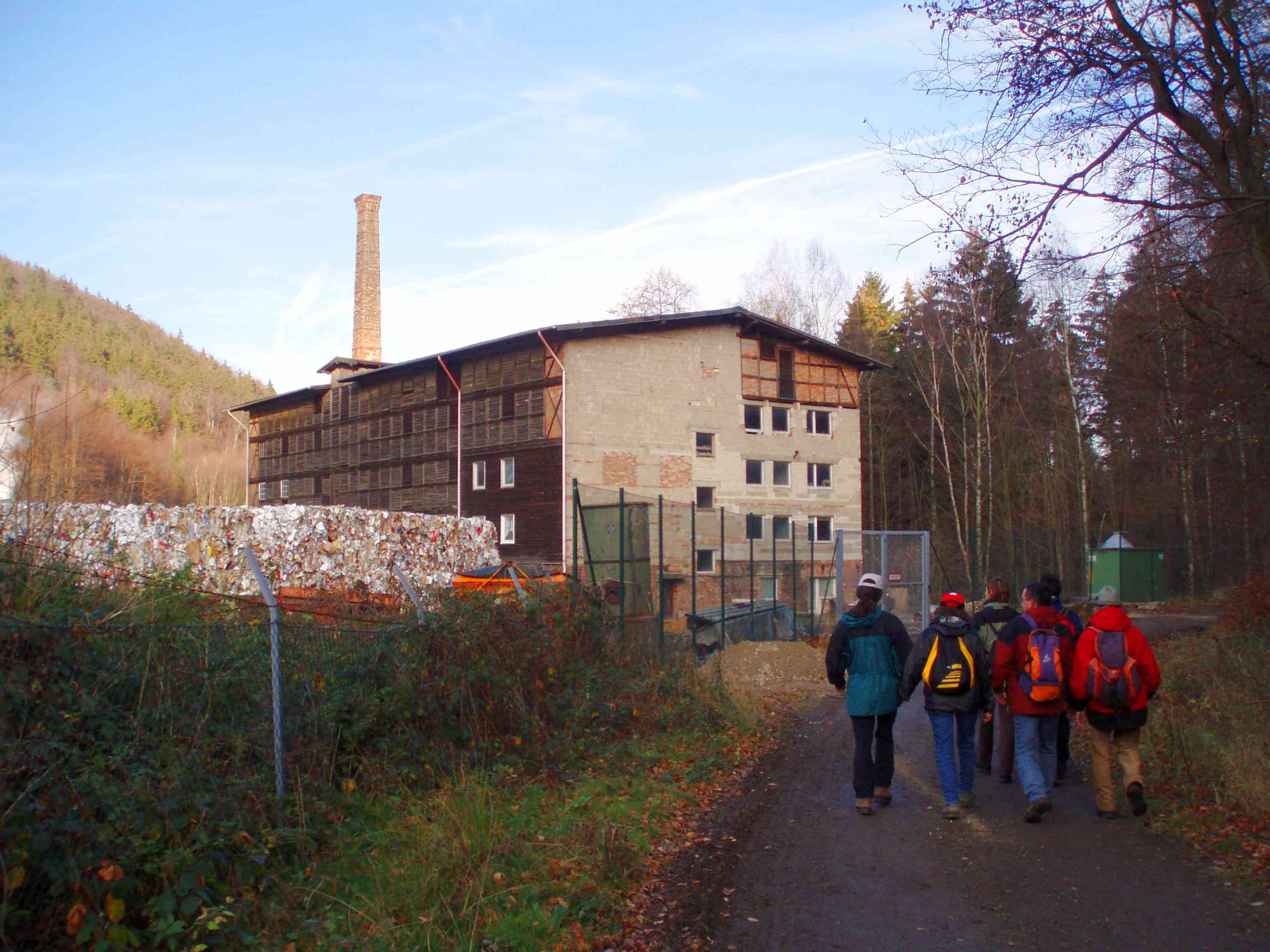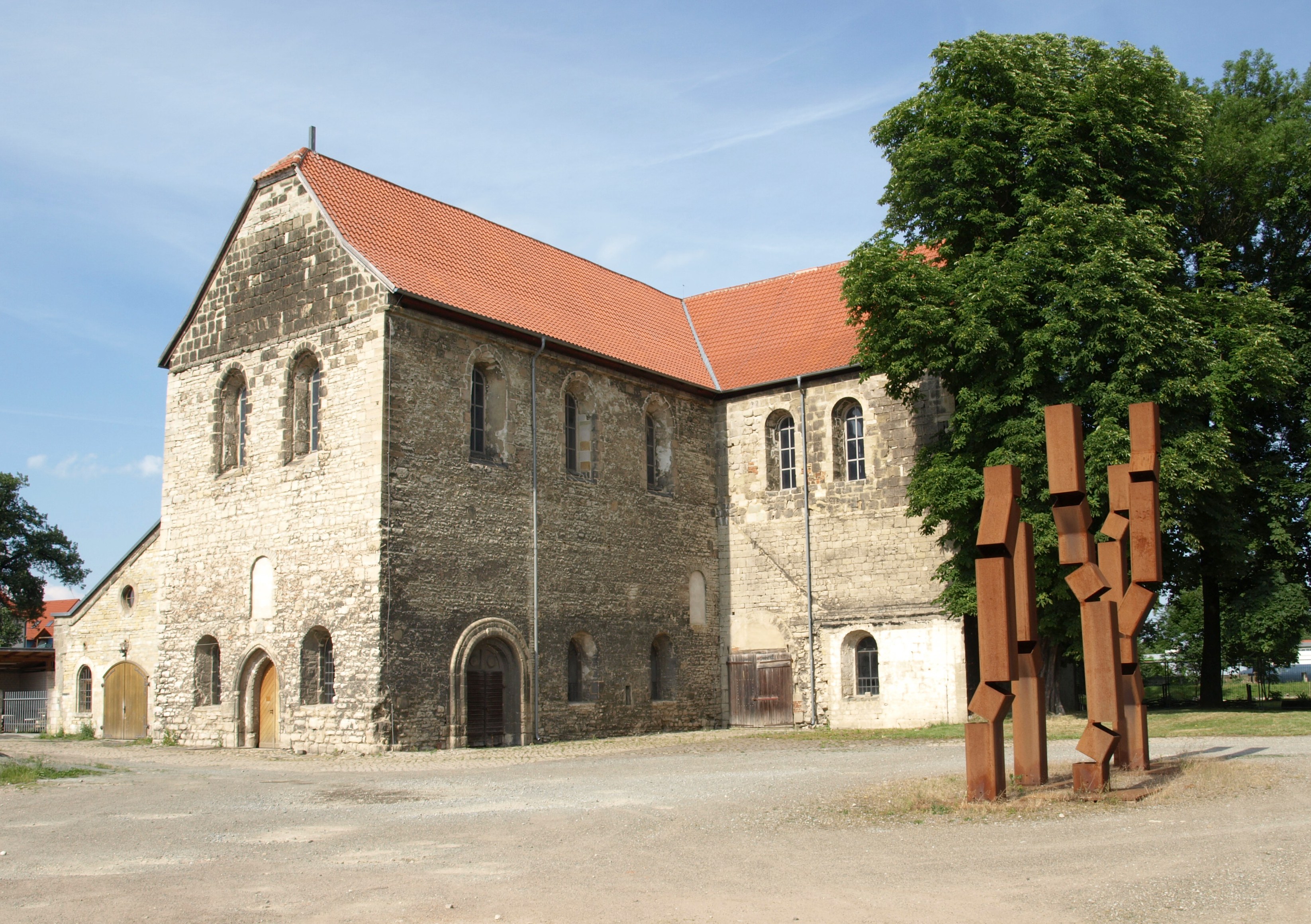|
Stapelburg
Stapelburg is a village and a former municipality in the Harz (district), district of Harz, in Saxony-Anhalt, Germany. Since 1 January 2010, it is part of the Nordharz municipality. Geography It is located at the northern foot of the Harz mountain range and Harz National Park, about north of the town of Ilsenburg. The small Ecker river in the west, a tributary of the Oker, forms the border with the town of Bad Harzburg in Lower Saxony. The settlement has access to the Bundesstraße 6 federal highway running from the Bundesautobahn 395 near Goslar to Halle, Saxony-Anhalt, Halle and the Bundesautobahn 14. Stapelburg station is served by the Vienenburg-Halberstadt railway line. History Stapelburg Castle was first mentioned in a 1306 deed as a property of the County of Wernigerode, Counts of Wernigerode; it was meant to protect and control the trade route to the Free imperial city, Imperial City of Goslar near the border with the Principality of Brunswick-Wolfenbüttel. Prior to ... [...More Info...] [...Related Items...] OR: [Wikipedia] [Google] [Baidu] |
Stapelburg Castle
The Stapelburg () is a ruined mediæeval castle built to guard the road on the northern edge of the Harz mountains at Stapelburg in the district of Harz in the German state of Saxony-Anhalt. History The Stapelburg was built before 1306 by the Counts of Wernigerode to guard the military road that connected the counts' main ancestral castle with the imperial and mining town of Goslar. It also acted as a toll station. The castle was enfeoffed several times and in 1394 came into the possession of the Diocese of Halberstadt for a sum of 600 marks. On 25 January 1432, Count Botho of Stolberg accepted Stapelburg Castle and its estate from Bishop John of Halberstadt as a pledge, after it should have been previously enfeoffed to the last Wernigerode count who had died in 1429. But Stapelburg was redeemed again by the Diocese of Halberstadt and pledged to Heinrich von Bila, who was the last vassal before Stapelburg was enfeoffed by Bishop Gebhard von Halberstadt on 4 June 1463 for 200 Rh ... [...More Info...] [...Related Items...] OR: [Wikipedia] [Google] [Baidu] |
Ahlsburg (castle)
The Ahlsburg or Alerdestein was an Imperial castle near Stapelburg in the present-day Harz district, in the German state of Saxony-Anhalt. Location The site of the former Ahlsburg is located about south-southwest of Stapelburg and north-northeast of the Ecker Dam, on the northern edge of the Harz mountain range. It is situated on the eastern bank of the Ecker River, a south-eastern tributary of the Oker that forms the state border with Lower Saxony to the west. The castle stood above a narrow section of the valley, where a footbridge crossed the Ecker, on a spur with steep granite crags. History A Saxon noble ''Alardus'' of Burgdorf is mentioned as a witness, when in 1218 Emperor Otto IV made his will at nearby Harzburg Castle. Alardus' ancestors had been vested with estates around the former Werla ''Kaiserpfalz'' in the 12th century and probably erected the castle where the Ecker River formed the border of the County of Wernigerode with the Principality of Brunswick-Wol ... [...More Info...] [...Related Items...] OR: [Wikipedia] [Google] [Baidu] |
Nordharz
Nordharz (, literally "North Harz") is a municipality in the district of Harz, in Saxony-Anhalt, Germany. The municipal area consists of eight ''Ortschaften'' or municipal divisions:Hauptsatzung der Gemeinde Nordharz September 2020. * Abbenrode * Danstedt * Heudeber * Langeln * Schmatzfeld * [...More Info...] [...Related Items...] OR: [Wikipedia] [Google] [Baidu] |
Ecker
The Ecker is a , right-hand, southeast tributary of the Oker which runs mainly through the Harz mountains in the German states of Saxony-Anhalt and Lower Saxony. Course From its source to Abbenrode the Ecker is a border river, today running between the federal states of Saxony-Anhalt and Lower Saxony. Prior to German reunification this was also the border between the German Democratic Republic in the east and Federal Republic of Germany to the west. The Ecker rises around southwest of the Brocken at at the ''Eckersprung''. Until the border was reopened it was the end of the Goethe Way (''Goetheweg'') from Torfhaus. Today there is a large picnic area with toilets at the ''Eckersprung''. Along a steep, rocky bed, the Ecker initially flows to the Ecker Dam, then through the deeply incised Ecker valley towards the north-northeast, where it passes the Ahlsburg, and then leaves the Harz. The upper Ecker valley is part of the Harz National Park. Only the site of the paper facto ... [...More Info...] [...Related Items...] OR: [Wikipedia] [Google] [Baidu] |
Luvos
Heilerde-Gesellschaft Luvos Just GmbH & Co. KG is a German manufacturer of medicinal clay (''Heilerde'', "healing-earth")-based products for both internal and external application. Four different fineness grades of loess in both capsule and powder form are available from the company, as well as cosmetics products. The Luvos purified loess consists mainly of montmorillonite. History Luvos was established by alternative medicine practitioner Adolf Just in Blankenburg in 1918. Previously, Just had founded the ''Jungborn'' in 1895, a center for alternative healing, where he had extolled and popularized the healing properties of certain clays. The ''Jungborn'' was situated between Eckertal and Stapelburg in the Harz, an area which later became part of East Germany. Therefore, the Luvos company was relocated to Friedrichsdorf in the Taunus. The company is still family-owned today and run by Just's great-granddaughter Ariane Kaestner. In 2017 the company was fined €40,000 for fraudu ... [...More Info...] [...Related Items...] OR: [Wikipedia] [Google] [Baidu] |
Blick Auf Stapelburg
''Blick'' (View) is a Swiss German-language daily newspaper and online news website covering current affairs, entertainment, sports and lifestyle. Based in Zurich, it is the largest newspaper in Switzerland with a print circulation of around 285,000. The newspaper has been printed continuously since its inception in 1959. History and profile ''Blick'' was established in 1959. The newspaper was the first Swiss tabloid publication. The format of ''Blick'' was broadsheet until 2005 when it was switched to tabloid. The new format induced controversies: protests began and many boycotted the scandalous newspaper. It was nevertheless a huge financial success. However, in 2009 the daily changed its format to broadsheet. Its sister paper was from 2008–2018 '' Blick am Abend'', an evening free daily. Both papers are owned by Ringier and are based in Zürich. Ladina Heimgartner was appointed as CEO in October 2020. In August 2023, Christian Dorer stepped down as Editor-in-Chief after ... [...More Info...] [...Related Items...] OR: [Wikipedia] [Google] [Baidu] |
Halberstadt
Halberstadt (; Eastphalian dialect, Eastphalian: ''Halverstidde'') is a town in the state of Saxony-Anhalt in central Germany, the capital of Harz (district), Harz district. Located north of the Harz mountain range, it is known for its old town center, which was largely destroyed by Allied bombings in the late stages of World War II after local Nazi leaders refused to surrender. The town was rebuilt in the following decades. In World War I Halberstadt was the site of a German military airbase and aircraft-manufacturing facilities. In World War II Halberstadt was a regional production center for Junkers aircraft, which also housed an Schutzstaffel, SS Forced labour under German rule during World War II, forced labor camp. Halberstadt now includes the area where the Langenstein-Zwieberge concentration camp was situated. Today the city has around 450 timber framed houses in its city centre and timber framed old villages like Langenstein, Saxony-Anhalt, Langenstein. Geography Ha ... [...More Info...] [...Related Items...] OR: [Wikipedia] [Google] [Baidu] |
Christian Ernest Of Stolberg-Wernigerode
Christian Ernest, Count of Stolberg-Wernigerode, (2 April 1691, Gedern – 25 October 1771, Wernigerode) was a German politician and a member of the House of Stolberg. From 1710 to 1771 he governed County of Wernigerode in the Harz mountains, which in 1714 became a dependency of Brandenburg-Prussia. Life Christian Ernest was the tenth child from the second marriage of Count (''Graf'') Louis Christian of Stolberg. His mother was Christine, daughter of Gustav Adolf, Duke of Mecklenburg-Güstrow. In accordance with his father's last will and testament of 23 January 1699, Christian Ernest was to inherit the County of Wernigerode, which until that point had been governed by his uncle, Count Ernest of Stolberg; the Hohnstein Forest south of Benneckenstein; and the claim for the mortgaged district (''Amt'') Elbingerode (Harz). After his father's death in 1710, Christian Ernest entered into his inheritance under the regency of his mother and called himself from then on ''Gr ... [...More Info...] [...Related Items...] OR: [Wikipedia] [Google] [Baidu] |
Folwark
''Folwark'' is a Polish word derived from the German ''Vorwerk''. A Folwark or Vorwerk is an agricultural estate or a separate branch operation of such an estate, historically a serfdom-based farm and agricultural enterprise (a type of latifundium), often very large. The term has changed its meaning several times throughout history and can therefore be used in various ways. Originally, the associated agricultural estates were usually located outside fortifications or castles and directly in front of them, and were therefore often referred to as ''Folwark'' or, in German-speaking regions, ''Vorwerk'', meaning advanced work or outwork, a kind of outlying defensive outpost. In place names and field names, the word can still be present in this meaning. Later, the term was used for outposts of manor farms with estate operations or individual tenant farms. On larger estates with extensive land areas, there were often smaller and more remote branch operations in addition to the ma ... [...More Info...] [...Related Items...] OR: [Wikipedia] [Google] [Baidu] |
House Of Stolberg
The House of Stolberg is an old and large German dynasty of the former Holy Roman Empire's Uradel, high aristocracy (''German nobility#Hochadel, Hoher Adel''). Members of the family held the title of ''Prince of the Holy Roman Empire, Fürst'' and ''Imperial Count, Graf''. They played a significant role in feudal Germany's history and, as a German mediatization, mediatized dynasty, enjoyed princely privileges until the collapse of the German Empire in 1918. The house has numerous branches. History There are over ten different theories about the origin of the counts of Stolberg, but none has been commonly accepted. Stolbergs themselves claimed descent from the 6th century Italian noble, Otto Colonna. This claim was symbolized by the column device on the Stolberg arms. However, it is most likely that they are descended from the counts of Hohnstein, when in 1222 Heinrich I of Hohnstein wrested the county from Ludwig III. The first representative of this family, Count Henry of Stolb ... [...More Info...] [...Related Items...] OR: [Wikipedia] [Google] [Baidu] |
Bishopric Of Halberstadt
The Diocese of Halberstadt was a Roman Catholic diocese () from 804 until 1648."Diocese of Halberstadt" '' Catholic-Hierarchy.org''. David M. Cheney. Retrieved February 29, 2016"Diocese of Halberstadt" ''GCatholic.org''. Gabriel Chow. Retrieved February 29, 2016 From 1180, the bishops or administrators of Halberstadt ruled a state within the , the |





